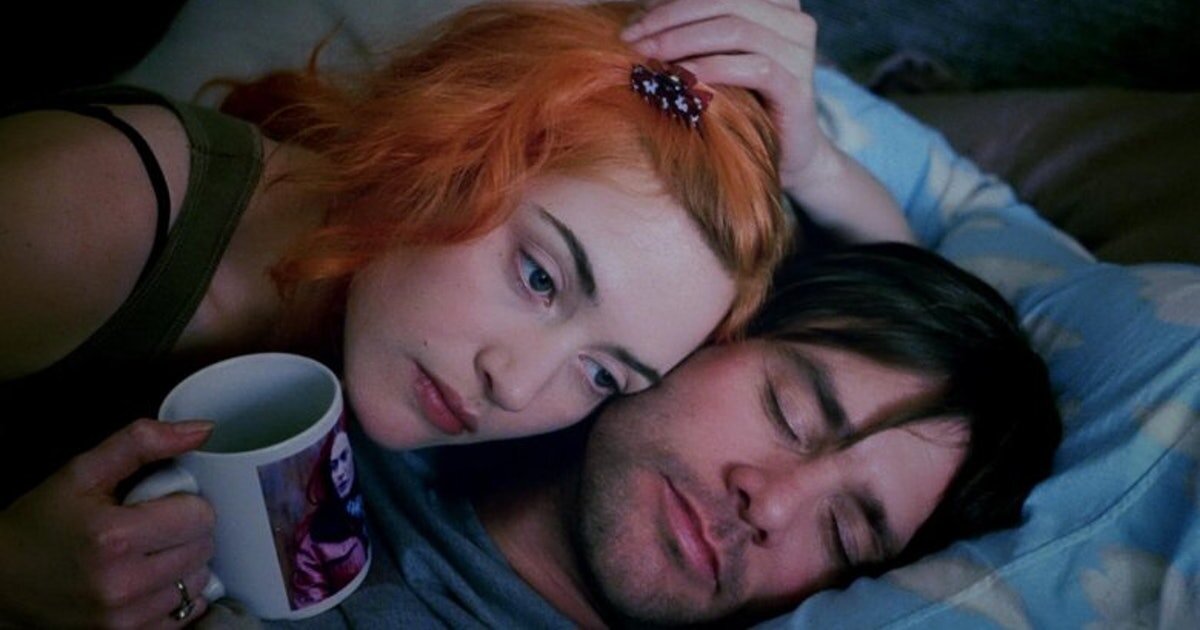ETERNAL SUNSHINE OF THE SPOTLESS MIND: FILM REVIEW
The other day my roommates were watching Eternal Sunshine of the Spotless Mind downstairs. It brought me back to thinking about this movie, which hasn’t been in my periphery for quite some time. As I passed by the T.V., I said, “Damn, this movie is so sad,” and my roommate responded with “Oh shit, is the ending sad?” The one girl on the couch who already watched the film just looked at me as we both acknowledged, “No...just the whole….thing...makes you feel... sort of depressed.” Watching Eternal Sunshine of the Spotless Mind is undoubtedly an uncomfortably heavy and twisted viewing experience, as it leaves the audience with much to contemplate afterwards, despite wanting nothing more than to just sit in the film’s remnants.
Eternal Sunshine of the Spotless Mind revolves around the aftermath of a painful breakup between Clementine (Kate Winslet) and Joel (Jim Carrey). After Joel finds out that Clementine underwent a medical procedure to erase all the memories from their relationship, Joel wants to do the same thing. However, Joel’s subconscious resists the procedure as his memories are being purged, and he desperately attempts to get them back, weaving in and out of different parts of his memories.
Kaufman’s understanding of human connection and loneliness is innate. The timeline of this film is certainly not linear, nor should we expect it to be. After all, when we shift through our memories on a day to day, we don’t make it a point to go in chronological order. I don’t think anyone’s ever thought, “Oh, I can’t access this memory from last week, because I haven’t fully processed an event that happened one month ago!” Similarly, Kaufman takes us on a journey through our own minds, as we watch Joel bounce between memories that are only tied together by a thread. Somehow, it makes sense. Our minds are able to fill in the gaps as easily as Joel can.
The memories that Joel is automatically drawn to are either random tidbits or sweet moments. This is true of our own memories, which take on various shapes over the passing of time. Usually, these shapes become more fond, as when we look at experiences retrospectively, we tend to mold it into something better than it actually was. This is also why Joel has such a hard time letting go of painful memories with Clementine; letting go of the bad also means departing with the good, and the good only gets better.
The colors in Eternal Sunshine of the Spotless Mind highlight the film's bleakness and reminded me of those in Sofia Coppola’s Lost in Translation. Amidst a somber and numb facade are ironically bright colors. Clementine’s hair is a potent orange, sometimes blue, sometimes green. However, when Clementine and Joel find their paths crossing once again, the colors are not as turbulent, leaving the viewer to wonder if we ended right where we began.
Ultimately, the question to ponder from watching Eternal Sunshine of the Spotless Mind has its roots from a poem by Alexander Pope:
How happy is the blameless vestal's lot!
The world forgetting, by the world forgot.
Eternal sunshine of the spotless mind!
Is a life without pain and memories of the past truly an eternal sunshine? As much as we'd like to think it is, Kaufman concludes that it’s not. In fact, the film reveals an even harder truth: we often go out of our way to put ourselves through immense pain, self-sabotaging and hurting others, all the while fully knowing the consequences. If we've learned anything, it's that we usually don't learn anything at all.


